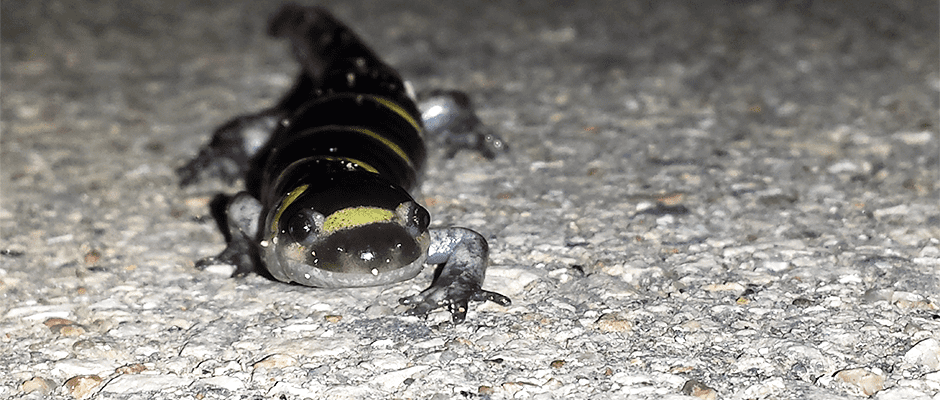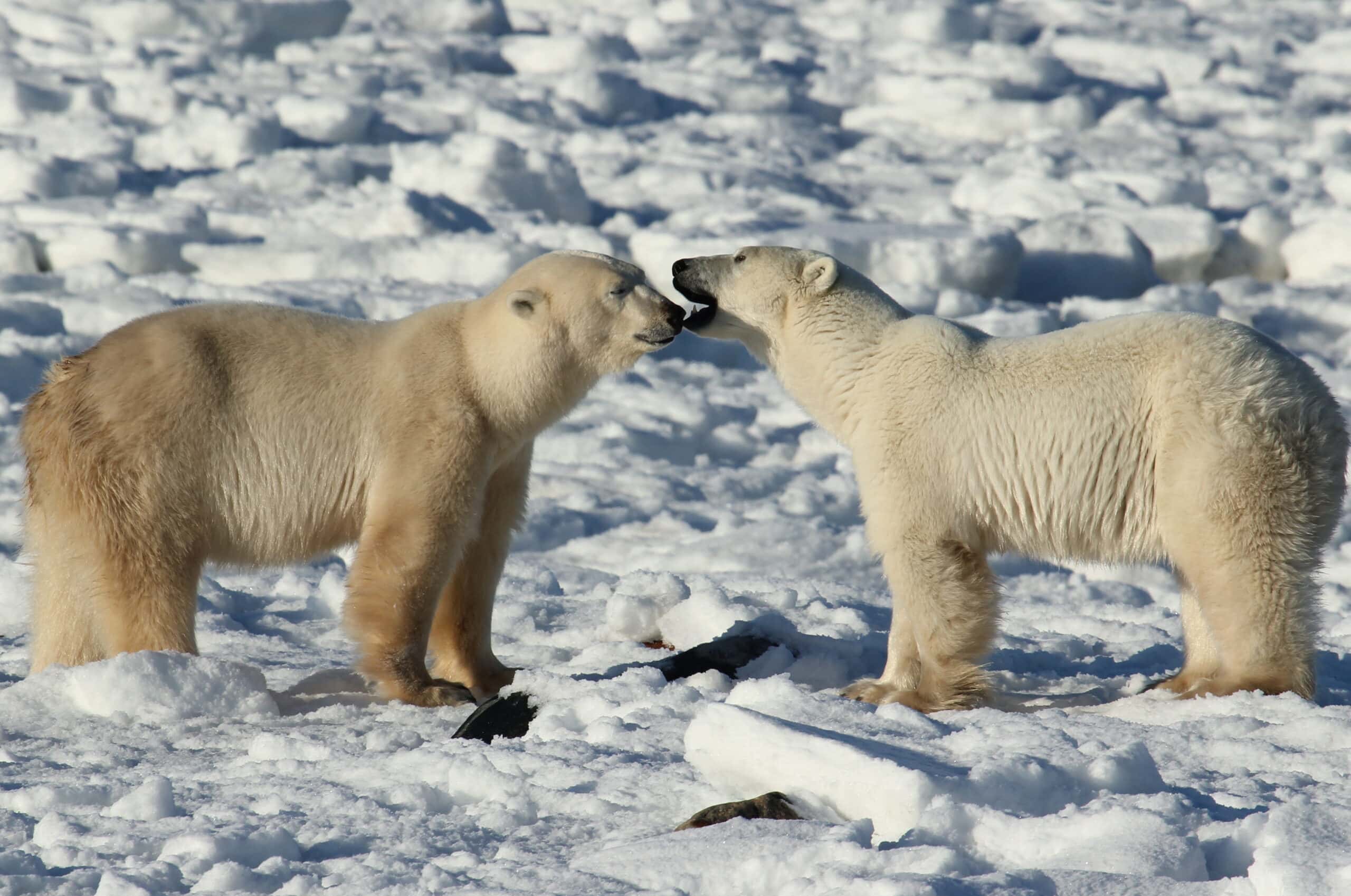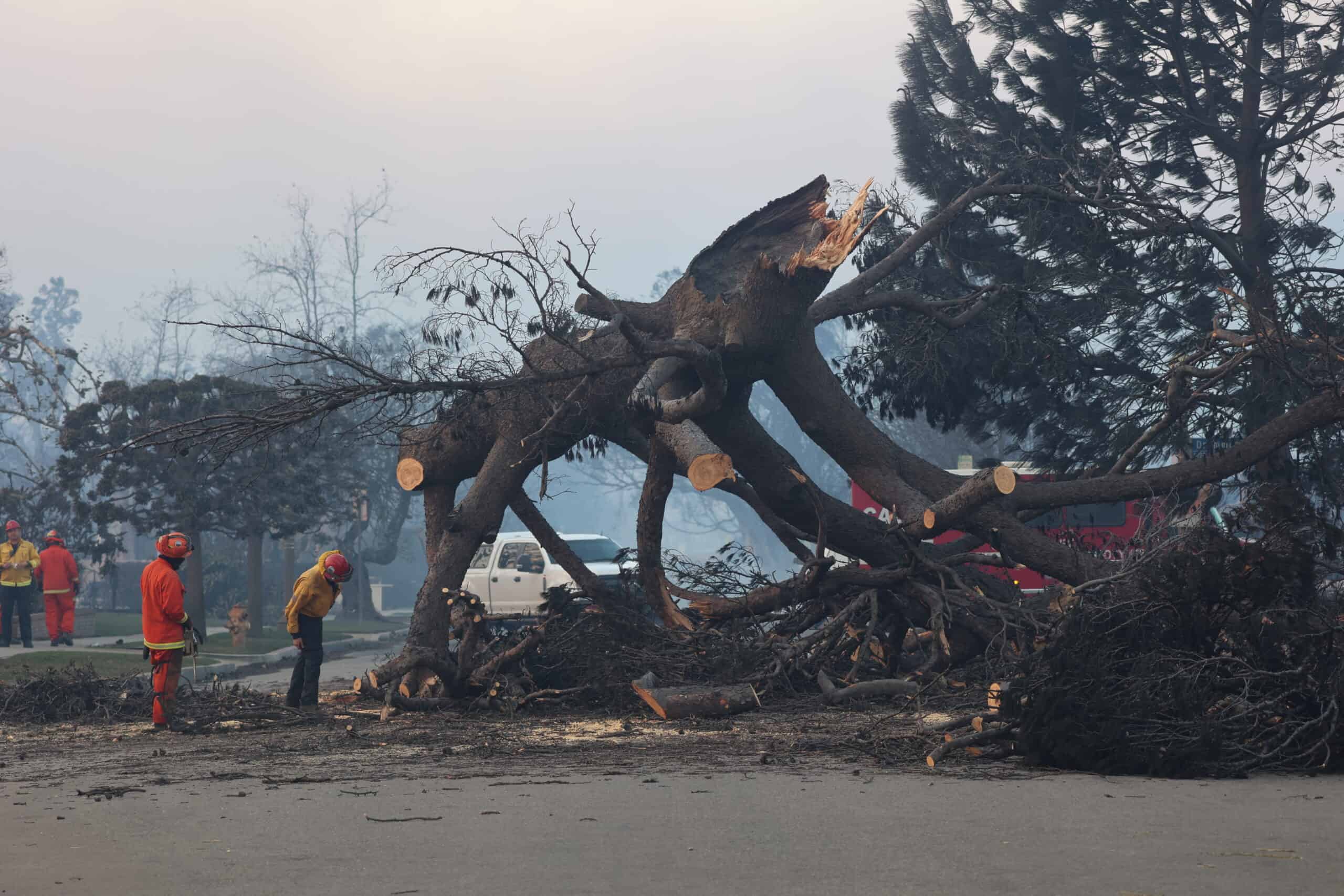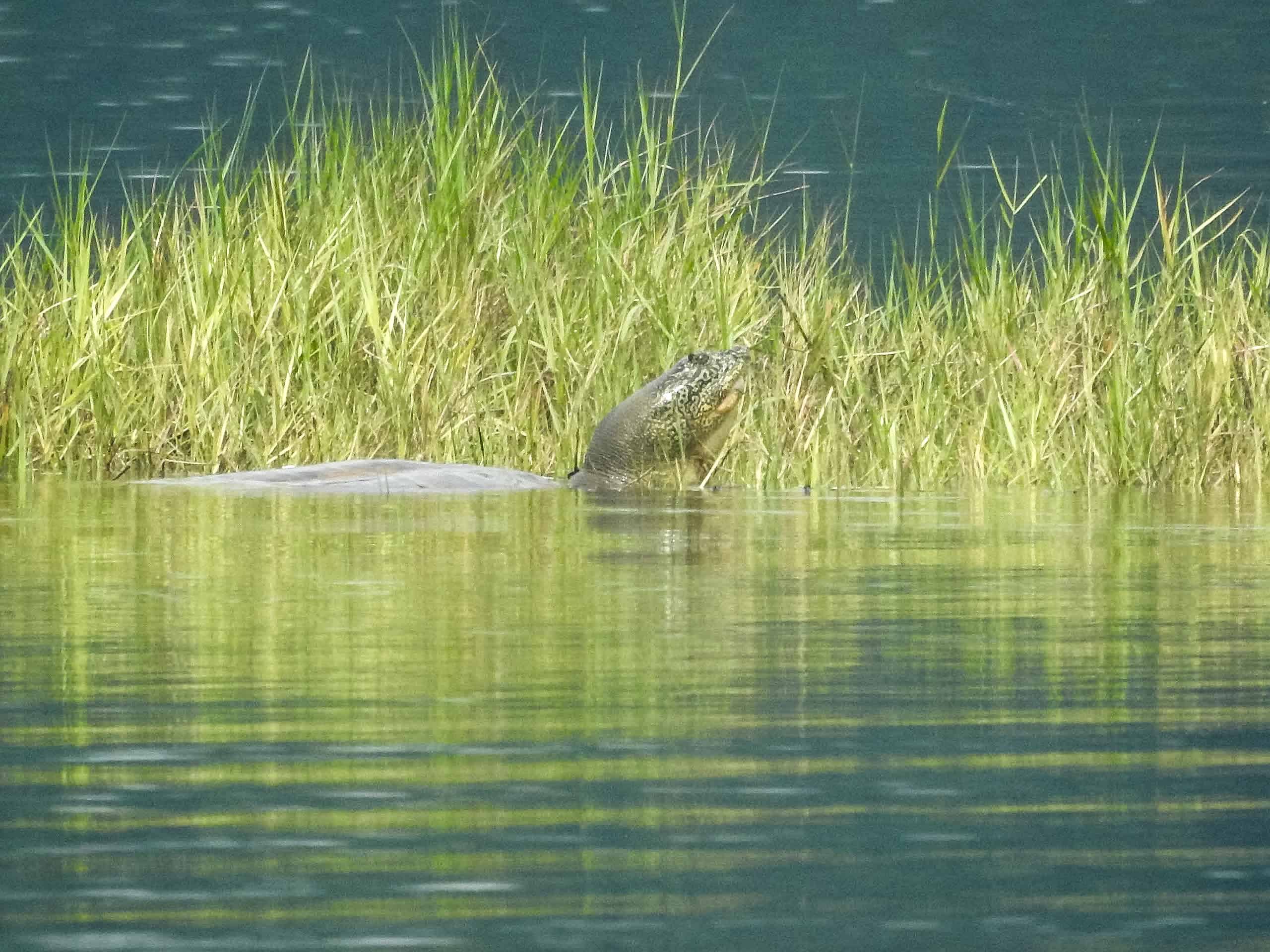Share this article
Salamanders’ breeding season affects dispersal, gene flow
Recent research on salamander gene flow in the forests of Missouri indicates that when deciding which ponds to protect on a landscape to conserve amphibian populations, biologists should pay attention to when the species breed.
As part of a broader study on amphibian metapopulations in Fort Leonard Wood, Missouri, researchers indirectly estimated salamander dispersal to determine which ponds were of more conservation value by measuring gene flow across the landscape. They focused on how features of the ponds impacted gene flow and genetic differentiation between populations for both spring and fall breeding species.
From 2014 to 2016, the scientists extracted and analyzed DNA from tissue samples they collected from salamanders in ponds at Fort Leonard Wood. These included the spring-breeding central newt (Notophthalmus viridescens louisianensis) and spotted salamander (Ambystoma maculatum) and fall-breeding marbled salamander (Ambystoma opacum) and ringed salamander (Ambystoma annulatum). The biologists then checked to see whether the genetic differentiation they measured between populations was best predicted by the distance between ponds.
The results indicated that for most of the species, “distance was a significant predictor of gene flow,” said Jacob Burkhart, lead author on the paper published in Ecology and Evolution. And in fall-breeding species, “distance between ponds had a much greater influence on genetic structure than for spring-breeding species,” he said, suggesting that fall breeders couldn’t disperse as easily and weren’t as well-connected over the landscape.
The scientists believe the season a species breeds ultimately drives genetic differentiation between salamander metapopulations. Fall-breeding salamanders require ponds that last longer because these animals overwinter in them, Burkhart said, and previous research has demonstrated the link between water permanence and amphibian population genetic structure. A salamander study in Massachusetts showed that fall breeders exhibit greater genetic differentiation than spring breeders, he said. Another study from Arizona reported that the more water-dependent frog species were also more differentiated across sampled populations, meaning they didn’t disperse as far and had lower connectivity over the landscape.
These findings inform habitat conservation that relies on closely-related surrogate species to assess metapopulation connectivity in threatened amphibian species that are too rare to work with directly, said Burkhart, a graduate student at the University of Missouri, Columbia.
“We need to study a species that has a similar life history to make decisions about how to manage those populations,” he said. “If we only used one spring breeding species as a surrogate for all four salamander species, we might suggest that the fall breeding species would be resilient to the loss of breeding ponds when, in fact, they appear to have a more limited number of suitable ponds on the landscape.”
Considering breeding phenology could be crucial when protecting habitat for the fall-breeding ringed salamander, which is of conservation concern across its range in the Ozark and Ouachita Mountains of Missouri, Arkansas and Oklahoma, Burkhart said. A forest-dependent animal that’s already threatened by habitat alteration, such as logging, it can’t shift its range northward into the prairie to cope with climate change.
Header Image:
An adult male ringed salamander crosses a road during the annual fall breeding migration in Missouri.
©Jacob Burkhart








